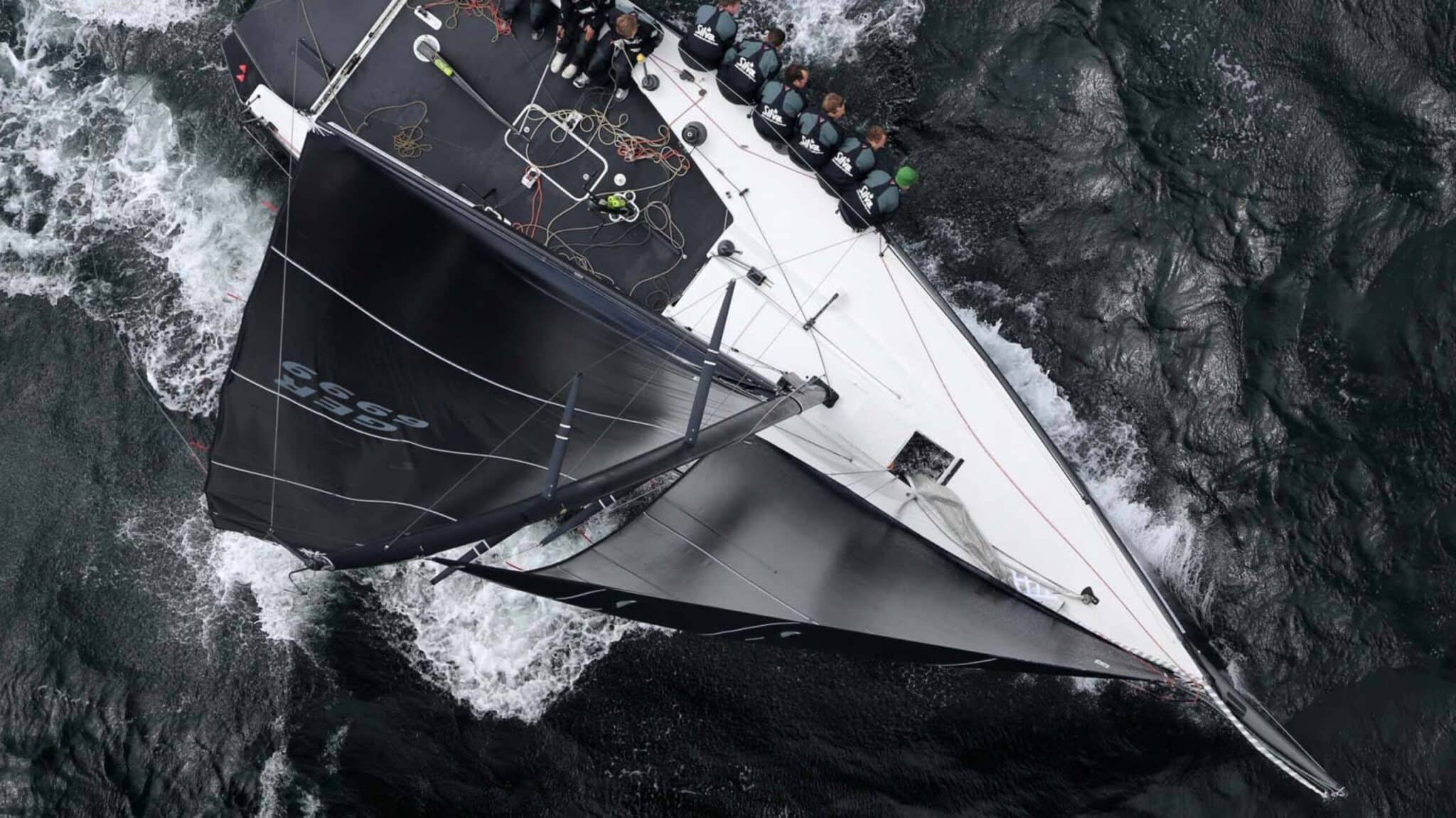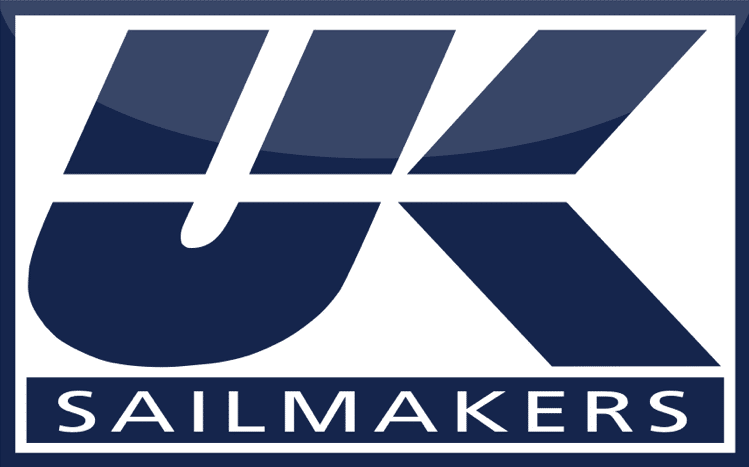
Radial – Racing Genoas

Radial sails were the only performance construction choice before Tape-Drive and other “string-sail” construction methods were invented. Sails made with a radial panel layout are still an option for racing sailors who do not want a Tape-Drive or membrane sail.
The fully articulated panel layout of a tri-radial genoa rotates the cloth’s thread line to match the primary load paths between the three corners of the sail. Radial cut sails are made with long narrow panels (called gores) designed to align the strong warp yarns of the material with the primary load paths of a sail. Because all loads start at a sail’s corners and then run in arcs across the sail to the other two corners, the gores radiate from the corners of the sail.
The materials used in radial-paneled sails are “warp-oriented,” meaning that the strongest fibers run the length of the gores.
Radial sails (with their many panels) allow sailmakers to use more than one laminated fabric in a sail. Stronger laminates can be used in high-load areas like the leech and tack, while lighter cloth can be used in the less-loaded luff of the sail. A third fabric, one that is heavy-duty and chafe-resistant, can be used in the foot panels to stand up to the abuses of tacking and chafing on the lifelines. By mixing cloth types, sailmakers can make a lighter sail that has more strength where needed.




Construction Options

Radial Woven Polyester
Description:
Tri-Radial panel layout
Construction:
Long narrow panels radiating from the three corners that attempt to follow the load paths between the corners. The straight fibers in each panel are discontinuous because they are cut on every seam unlike our X-Drive and Titanium sails.
Material:
Warp-oriented woven polyester cloth
Shape Stability:
★★
Shape after 500 hours:
Circa 40%
Price:
$$$

Radial Polyester Laminate
Description:
Tri-Radial panel layout
Construction:
Long narrow panels radiating from the three corners that attempt to follow the load paths between the corners. The straight fibers in each panel are discontinuous because they are cut on every seam unlike our X-Drive and Titanium sails.
Material:
Warp-oriented woven polyester cloth
Shape Stability:
★★
Shape after 500 hours:
Circa 40%
Price:
$$$

Radial Carbon Laminate
Description:
Tri-Radial panel layout
Construction:
Long narrow panels radiating from the three corners that attempt to follow the load paths between the corners. The straight fibers in each panel are discontinuous because they are cut on every seam unlike our X-Drive and Titanium sails.
Material:
Warp-oriented carbon laminates
Shape Stability:
★★★★
Shape after 500 hours:
Circa 70%
Price:
$$$$

